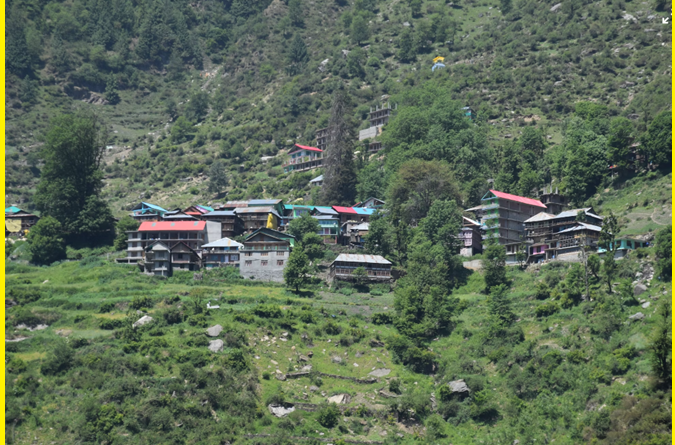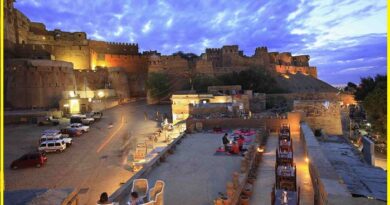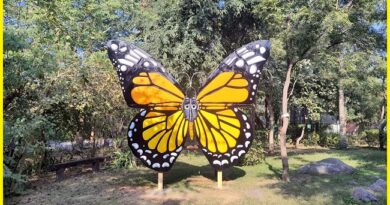Malana Village: A Blend of Myth, Mystery, and Majesty
Malana
Malana is a small village in the Kullu Valley of Himachal Pradesh, India. It’s known for its unique culture, distinct history, and cannabis cultivation. Here’s a guide to help you plan a trip to Malana, focusing on its distinctive aspects and ensuring a memorable experience. Malana is believed to be one of the oldest democracies in the world. Its inhabitants claim descent from Alexander the Great’s soldiers. Due to its geographical isolation, Malana has preserved its unique culture and traditions. The village follows an ancient form of democracy where the local council, known as the “Jury,” makes decisions for the community. Malana residents follow strict customs and rules. Outsiders are expected not to touch the residents, their belongings, or the village temple.
Attractions
Jamlu Devta Temple
Dedicated to Jamlu Devta, the local deity. The temple architecture is distinct, with intricate wooden carvings. Visitors should not touch the temple walls and must follow local etiquette.
Nature and Trekking
Chandrakhani Pass: Offers a challenging trek with breathtaking views of the Kullu Valley and surrounding peaks.
Rasol Pass: Another trek offering stunning landscapes and a chance to experience the remote beauty of the region.
Malana Weather
Malana, located in the Parvati Valley of Himachal Pradesh, experiences a temperate climate with distinct seasonal variations. Here’s a detailed breakdown of the weather throughout the year to help you plan your visit:
Spring (March to May)
- Temperature: 10°C to 20°C
- Weather: The weather during spring is pleasant with moderate temperatures. Snow starts to melt, making way for lush greenery and blooming flowers.
- Ideal for: Trekking, exploring the village, and enjoying the natural beauty.
- What to Pack: Light woolens for the daytime and warmer clothes for the evenings and early mornings.
Summer (June to August)
- Temperature: 15°C to 25°C
- Weather: Summers are warm and comfortable during the day, with cooler nights. However, this is also the monsoon season, so rain is frequent.
- Ideal for: Trekking and outdoor activities, but with caution due to potential slippery trails and landslides.
- What to Pack: Light clothing for the daytime, waterproof jackets, and good trekking shoes.
Autumn (September to November)
- Temperature: 10°C to 20°C
- Weather: Clear skies and pleasant weather make autumn an ideal time for outdoor activities and trekking.
- Ideal for: Trekking, exploring the village, and enjoying the post-monsoon greenery.
- What to Pack: Light woolens for the daytime and warmer clothes for the cooler evenings.
Winter (December to February)
- Temperature: -5°C to 10°C
- Weather: Winters are cold with heavy snowfall, especially in January and February. The village can become quite isolated due to snow-covered paths.
- Ideal for: Experiencing snow and the winter landscape, but travel can be challenging.
- What to Pack: Heavy woolens, thermal wear, gloves, and snow boots. Be prepared for challenging trekking conditions due to snow.
Tips for Travelers
- Check Weather Reports: Always check the weather forecast before your trip, especially during the monsoon and winter seasons.
- Altitude Considerations: Malana is at a high altitude, so be prepared for possible altitude sickness. Hydrate well and acclimate properly.
- Travel Safety: During winters, the trek can be challenging and possibly dangerous due to heavy snowfall. Ensure you have adequate gear and consider hiring a local guide.
- Monsoon Precautions: Landslides are common during the monsoon season, so check road conditions and be prepared for travel delays.
- Environmental Care: Malana is an eco-sensitive area. Ensure you leave no trace and carry back all your waste.
By planning your visit according to the seasonal weather conditions, you can ensure a comfortable and enjoyable trip to Malana. Whether you’re trekking through lush spring landscapes or navigating snowy winter trails, Malana offers a unique and rewarding experience for adventurous travelers.
Also Read- The Essence of Kullu Manali-Mountains, Meadows, and More
Malana Village History
Malana is a unique and historically rich village in the Kullu Valley of Himachal Pradesh, India. Known for its ancient culture, unique democratic system, and isolated location, Malana offers a fascinating glimpse into a way of life that has remained largely unchanged for centuries. Here’s a detailed look at the history and cultural significance of Malana Village:
Historical Background
Ancient Origins:
Mythological Roots: According to local legends, Malana was founded by Jamlu Rishi (or Jamdagni Rishi), a revered sage who is considered the village’s protector deity. The village is often referred to as “The Little Greece” of Himachal Pradesh because of its supposed connection to Alexander the Great.
Greek Connection: Some locals believe that the people of Malana are descendants of Alexander the Great’s soldiers who stayed back after his invasion of India. This belief is supported by the distinct physical features of the villagers and some aspects of their culture and language, although there is no concrete historical evidence to back this claim.
Cultural Isolation:
Geographical Seclusion: Malana’s remote location in the Parvati Valley has contributed to its cultural isolation. The village is surrounded by high mountains, making access difficult and helping to preserve its unique traditions.
Self-Governance: The villagers have historically governed themselves with minimal interference from the outside world. This autonomy has allowed them to maintain their distinct cultural practices and social structure.
Unique Culture and Traditions
Democratic System:
Ancient Democracy: Malana is known for its ancient democratic system, which is one of the oldest in the world. The village is governed by a council known as the “Jury,” which comprises village elders and members chosen by the community.
Decision-Making: The council makes all important decisions regarding the village’s affairs, from resolving disputes to managing resources. This system is believed to have been in place for thousands of years.
Social Structure:
Strict Customs: Malana residents follow strict customs and social rules. Outsiders are expected not to touch the villagers or their belongings, and there are designated paths for visitors to walk on.
Religious Beliefs: The village’s primary deity is Jamlu Devta, and the Jamlu Devta Temple is the spiritual center of Malana. The temple, built in the traditional Kathkuni style, is considered sacred, and touching the temple walls is prohibited for outsiders.
Language and Dialect:
Kanashi: The people of Malana speak Kanashi, a dialect that is unique to the village and not spoken anywhere else. This language further underscores the village’s cultural isolation.

Malana Village Trek
Trekking to Malana Village is a unique and rewarding experience that combines natural beauty with cultural immersion.
Starting Point: Jari
1. Getting to Jari:
- By Air: The nearest airport is Kullu-Manali Airport (Bhuntar), about 38 km from Jari. From Bhuntar, you can hire a taxi to Jari.
- By Road: Jari is well connected by road. You can take a bus or taxi from major cities like Kullu, Manali, or Bhuntar.
- By Train: The nearest railway stations are in Chandigarh and Pathankot. From there, you can take a bus or taxi to Bhuntar and then proceed to Jari.
The Trek to Malana
2. Trekking Route:
- Distance: Approximately 4-5 km from Jari to Malana.
- Duration: The trek typically takes 2-3 hours, depending on your pace and fitness level.
- Difficulty Level: Moderate. The trail includes steep and rocky sections, so be prepared for some challenging spots.
3. Route Description:
- Starting Point: Begin your trek from the village of Jari. Follow the signs and ask locals for directions to the trailhead.
- Initial Ascent: The trail starts with a moderate ascent through lush forests and terraced fields. Enjoy the scenic views of the Parvati Valley as you climb.
- Mid-Trek: As you progress, the path becomes steeper and more rugged. Watch your footing, especially during the monsoon season when the trail can be slippery.
- Approaching Malana: Nearing Malana, you’ll start to see traditional houses and terraced farms. The final stretch offers panoramic views of the surrounding mountains.
In Malana Village
4. Exploring Malana:
- Cultural Etiquette: Malana follows strict customs. Avoid touching residents, their belongings, and the temple walls. Photography of certain areas and people might be restricted.
- Jamlu Devta Temple: Visit the unique wooden temple dedicated to the local deity, Jamlu Devta. Observe the intricate carvings and architecture.
- Interaction with Locals: Learn about the village’s ancient democratic system and its unique culture. Respect their traditions and way of life.
5. Accommodation:
- Guesthouses and Homestays: Malana has limited accommodation options, mostly in the form of guesthouses and homestays. Book in advance, especially during peak seasons.
- Camping: If you prefer, you can camp in designated areas around the village. Ensure you have appropriate gear for the weather conditions.
Practical Tips
6. What to Pack:
- Clothing: Layered clothing suitable for changing weather conditions. Light woolens for spring/autumn, heavy woolens for winter, and waterproof gear for monsoon.
- Footwear: Sturdy trekking shoes with good grip.
- Essentials: Water bottle, snacks, first aid kit, trekking poles, and a flashlight.
7. Best Time to Visit:
- Spring (March to May): Pleasant weather and blooming flowers.
- Autumn (September to November): Clear skies and ideal trekking conditions.
- Summer (June to August): Be prepared for rain and slippery trails.
- Winter (December to February): Cold and snowy, suitable for experienced trekkers.
8. Environmental Responsibility:
- Leave No Trace: Carry all your waste back with you. Avoid using plastic and be mindful of your environmental impact.
- Respect Nature: Stay on marked trails to protect local flora and fauna.
Safety and Precautions
9. Health and Safety:
- Acclimatization: Take your time to acclimate to the altitude. Hydrate well and avoid overexertion.
- Local Guide: Consider hiring a local guide, especially if you’re trekking during the monsoon or winter. They can provide valuable insights and ensure your safety.
Trekking to Malana Village offers a unique blend of adventure and cultural discovery. By preparing adequately and respecting local customs, you can ensure a memorable and enriching experience.
How to Reach Malana
Reaching Malana Village in Himachal Pradesh involves multiple modes of transport, given its remote location. The nearest Airport is the Kullu-Manali Airport (Bhuntar), approximately 38 km from Jari. Bhuntar Airport has limited flights connecting to major cities like Delhi and Chandigarh. After landing, you can hire a taxi to Jari.
The Nearest Railway Station is the Chandigarh Railway Station (around 300 km from Jari) and Pathankot Railway Station (around 300 km from Jari). From either railway station, you can take a bus or hire a taxi to Bhuntar, then proceed to Jari. apart from this Several overnight buses are available from Delhi and Chandigarh to Bhuntar.



